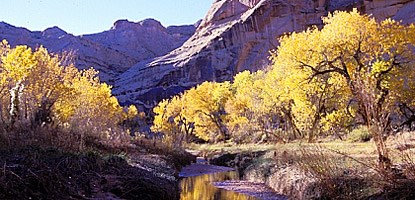
NPS Photo by Neal Herbert Of the non-native plant species in Canyonlands, tamarisk is often seen as the most troublesome. This water-loving, Mediterranean plant arrived in North America in the 1800's. It was used initially as an ornamental shrub, and was later planted by the Department of Agriculture to slow erosion along the banks of the Colorado River in Arizona. Spreading upriver at roughly 12 miles per year, tamarisk is now established on all of the Colorado’s tributaries. Once established, dense tamarisk stands increase fire frequency, lower plant and animal diversity, and significantly alter stream hydrology. Tamarisk consumes a great deal of water, and rarely provides food and shelter necessary for the survival of wildlife. Mature cottonwood communities are declining because shading inhibits the growth of their seedlings. Horseshoe Canyon in Canyonlands is one of a several sites where the National Park Service has made an effort to control tamarisk. Thus far, the effects are noticeable. Since control began, cottonwood seedlings have become more prevalent and signs indicate that the water table in the canyon has risen. Similar control experiments have been established in nearby areas, mostly in small, tributary canyons off the Colorado River. |
Last updated: February 24, 2015
